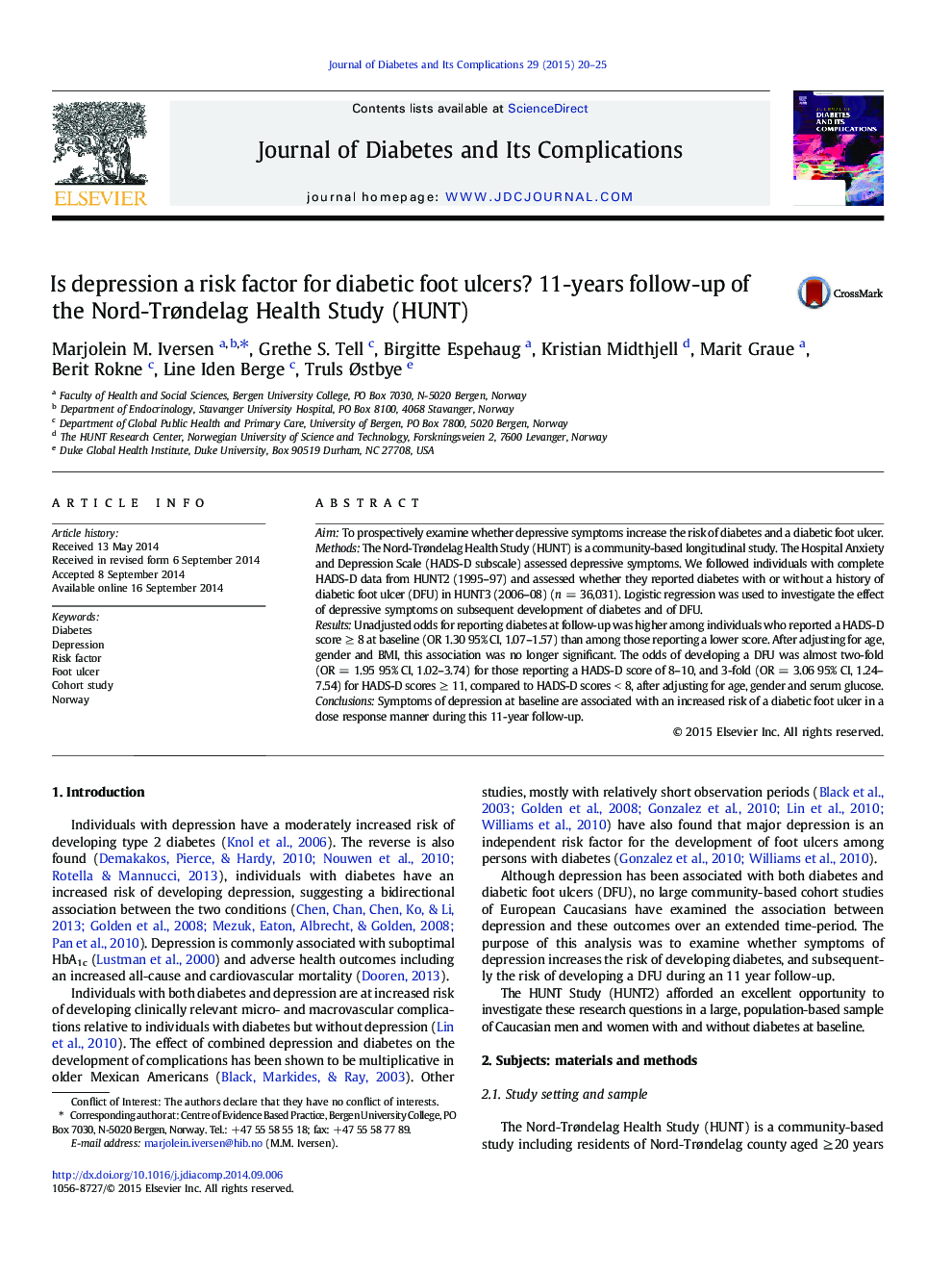| Article ID | Journal | Published Year | Pages | File Type |
|---|---|---|---|---|
| 5902783 | Journal of Diabetes and its Complications | 2015 | 6 Pages |
AimTo prospectively examine whether depressive symptoms increase the risk of diabetes and a diabetic foot ulcer.MethodsThe Nord-Trøndelag Health Study (HUNT) is a community-based longitudinal study. The Hospital Anxiety and Depression Scale (HADS-D subscale) assessed depressive symptoms. We followed individuals with complete HADS-D data from HUNT2 (1995-97) and assessed whether they reported diabetes with or without a history of diabetic foot ulcer (DFU) in HUNT3 (2006-08) (n = 36,031). Logistic regression was used to investigate the effect of depressive symptoms on subsequent development of diabetes and of DFU.ResultsUnadjusted odds for reporting diabetes at follow-up was higher among individuals who reported a HADS-D score â¥Â 8 at baseline (OR 1.30 95% CI, 1.07-1.57) than among those reporting a lower score. After adjusting for age, gender and BMI, this association was no longer significant. The odds of developing a DFU was almost two-fold (OR = 1.95 95% CI, 1.02-3.74) for those reporting a HADS-D score of 8-10, and 3-fold (OR = 3.06 95% CI, 1.24-7.54) for HADS-D scores â¥Â 11, compared to HADS-D scores < 8, after adjusting for age, gender and serum glucose.ConclusionsSymptoms of depression at baseline are associated with an increased risk of a diabetic foot ulcer in a dose response manner during this 11-year follow-up.
